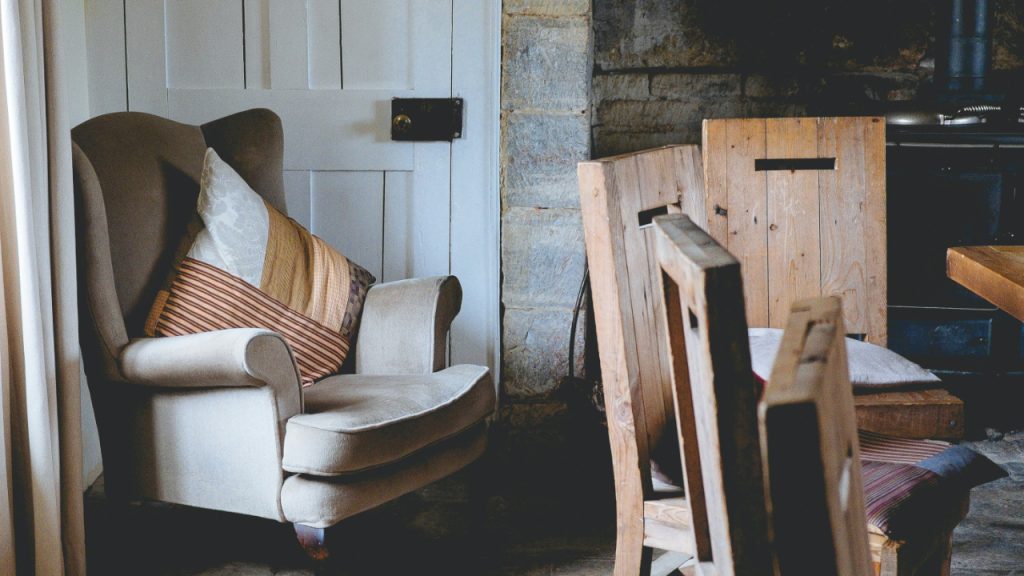I’ve always been drawn to the idea of having a peaceful, clutter-free home, but I didn’t want it to feel cold or boring. Minimalism isn’t about getting rid of everything; it’s about keeping what truly matters and creating a space that feels open, calming, and stylish.
The beauty of a minimalist home is that it can suit anyone’s personal taste, whether you prefer a modern edge or a cozy vibe. It’s less about a rigid set of rules and more about intentional choices. If you’re looking for ways to embrace minimalism without giving up your unique style, these tips will help you strike the perfect balance.
Start With a Decluttering Session

The first step in any minimalist journey is getting rid of things you no longer need. Go through your belongings and decide what you truly use and love. Focus on keeping items that serve a purpose or spark joy, and donate or sell the rest. Decluttering creates space and makes it easier to design your home intentionally.
Opt for Neutral Colors

A neutral color palette creates a sense of calm and simplicity. Choose whites, beiges, grays, or soft earth tones for your walls and furniture. These shades make a space feel open and are easy to pair with colorful accents if you want a pop of personality.
Invest in Multi-Functional Furniture

Furniture that serves more than one purpose can help you save space and reduce clutter. Look for pieces like storage ottomans, sofa beds, or coffee tables with built-in compartments. These smart choices let you keep things tidy without sacrificing practicality.
Embrace Negative Space

Not every wall or surface needs to be filled. Leaving empty spaces around your home creates a sense of openness and allows the eye to focus on the things that matter. Think of it as giving your decor room to breathe.
Choose High-Quality, Timeless Pieces

Instead of following trends, invest in furniture and decor that will stand the test of time. Well-made items in classic designs might cost more upfront but will save you money and effort in the long run. Plus, they add a touch of elegance to any space.
Use Hidden Storage Solutions

Minimalism doesn’t mean living without stuff—it’s about keeping your space organized. Use storage solutions like baskets, bins, or furniture with hidden compartments to tuck away items you don’t use daily. This keeps surfaces clear and your home looking clean.
Stick to One Statement Piece Per Room

Avoid overwhelming your space with too many focal points. Instead, choose one standout piece for each room—a bold piece of art, a stunning light fixture, or a unique piece of furniture—and let it shine.
Keep Decorations Simple

Minimalist decor doesn’t have to be boring. Opt for simple, meaningful pieces like a framed photo, a single vase, or a small collection of books. Less is more when every item has a purpose or tells a story.
Incorporate Natural Materials

Wood, stone, linen, and other natural materials bring warmth and texture to minimalist spaces. These elements help keep your home from feeling too stark and create a connection to the outdoors.
Rely on Good Lighting

Lighting can make or break a minimalist home. Use a mix of natural light, ambient lighting, and task lighting to create a cozy and functional atmosphere. Floor lamps and pendant lights in sleek designs can double as decor.
Keep Surfaces Clear

Counters, tables, and shelves look best when they’re uncluttered. Only display a few carefully chosen items, like a candle or a plant, and keep the rest stored away. This small habit makes a big impact on how your space feels.
Add Greenery

Plants are a fantastic way to add life and color to a minimalist home. Choose low-maintenance plants like succulents, snake plants, or pothos. They look great, improve air quality, and bring a touch of nature indoors.
Limit Patterns and Textures

Too many patterns and textures can make a room feel busy. Stick to one or two subtle patterns or textures per space, like a woven rug or a textured throw, to add depth without overwhelming the room.
Set Up Designated Zones

In open-concept spaces, use rugs or furniture to define areas like the living room, dining space, or home office. Keeping zones distinct makes the room feel organized and functional without adding walls or clutter.
Prioritize Quality Over Quantity

It’s better to have a few well-loved items than a lot of things you barely use. Apply this mindset to everything in your home, from your wardrobe to your kitchen tools, to keep clutter under control.
Create a Capsule Wardrobe

A minimalist home starts with the things you own, including your clothes. Build a capsule wardrobe with versatile pieces you can mix and match. This frees up closet space and makes getting dressed much easier.
Avoid Impulse Buys

Before buying something new, ask yourself if you really need it and if it aligns with your minimalist vision. It’s easy to accumulate clutter by making impulse purchases, so take a moment to reflect before you bring something into your home.
Personalize With Intentional Decor

Minimalism doesn’t mean erasing your personality from your space. Display items that mean something to you, like travel souvenirs or heirlooms, in a thoughtful and intentional way. This keeps your home feeling warm and unique.
18 Everyday Things Amish Women Aren’t Allowed to Do

The Amish culture is known for its simple way of life and adherence to traditional values. While this lifestyle may seem appealing to some, there are certain restrictions that Amish women face that most modern women do not. Take a look at these things that we take for granted that are off-limits to Amish women.
Read More: 18 Everyday Things Amish Women Aren’t Allowed to Do
16 American Foods Brits Can’t Stand

Food preferences can vary wildly across cultures, and what’s considered a delicacy in one country might be seen as downright bizarre in another. This cultural divide is particularly evident when comparing American and British cuisines. While the two nations share a common language, their tastes in food can be worlds apart. From overly sweet concoctions to processed cheese products, there are certain American foods that many Brits find hard to stomach.
Read More: 16 American Foods Brits Can’t Stand
17 Old Wives’ Tales That Are Actually True

Old wives’ tales have been passed down through generations, often dismissed as mere superstition. However, many of these age-old beliefs are rooted in truth. From health tips to weather predictions, these stories from the past can surprise us with their accuracy. Here are 17 old wives’ tales that are actually true.
Read More: 17 Old Wives’ Tales That Are Actually True
Katy Willis is a writer, master herbalist, master gardener, and certified canine nutritionist who has been writing since 2002. She’s finds joy in learning new and interesting things, and finds history, science, and nature endlessly fascinating.

